The Many Worlds of Winnipesaukee
New England’s most popular summer lake holds something for everyone: the tourist, the nature lover, the seeker of seclusion.
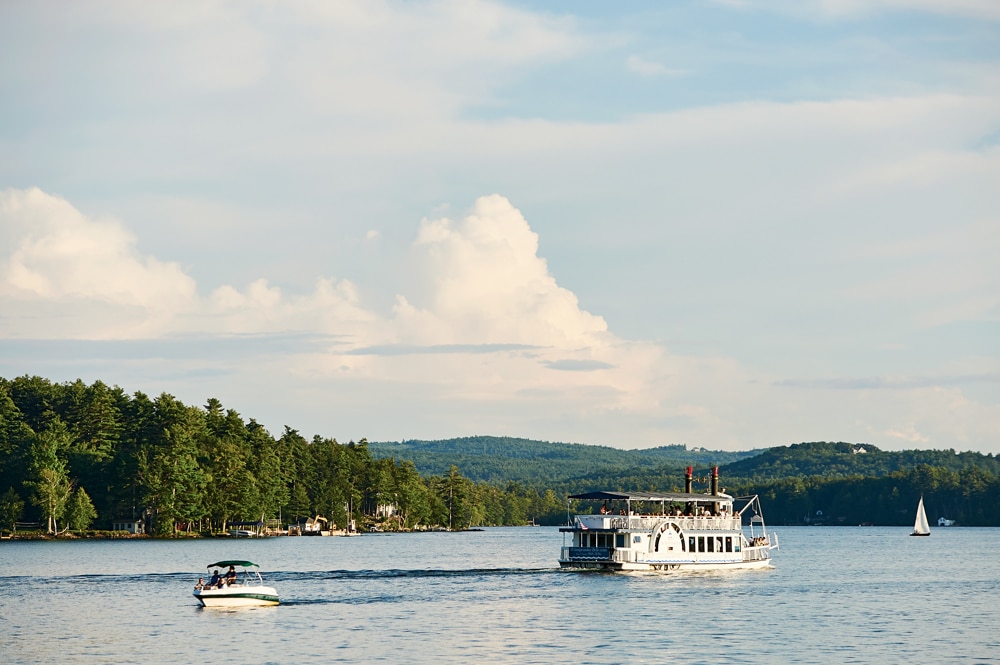
Coffee By Design | Portland, Maine
Photo Credit : Katherine Keenan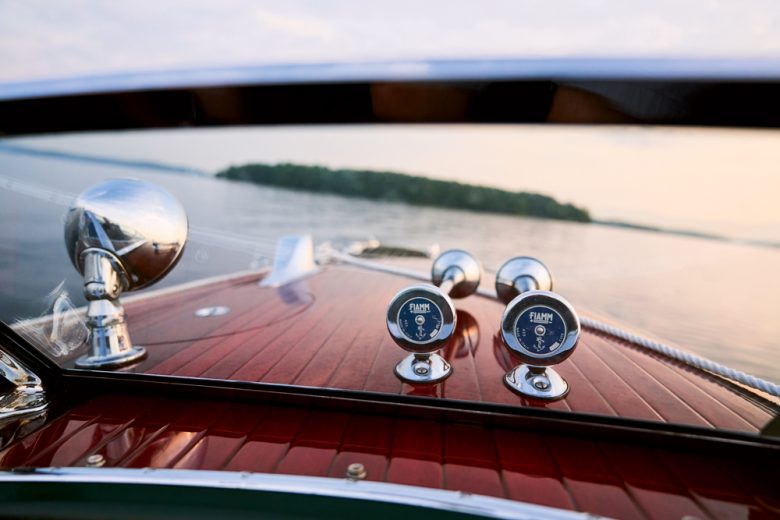
Photo Credit : Courtesy of the Keefe Family
When Sophia Loren visited Lake Winnipesaukee in the 1980s, she dined at Mama Lucy’s, an Italian restaurant on Cow Island. French President Nicolas Sarkozy paddled a canoe on Winnipesaukee in 2007, bare-chested. But what of Madame Chiang Kai-shek, the demure and exceedingly private first lady of China, who for much of the 20th century maintained a tasteful summer home in Wolfeboro, surrounding herself with stoical bodyguards? What did she do, lakeside?
The historical record is, alas, vague, and we can scarcely even guess, for Winnipesaukee contains many worlds. The largest body of water in New Hampshire is, at 21 miles long, not vast, but it’s so beloved that on almost any summer afternoon it is home to water-skiers and fishermen and lackadaisical, backstroking swimmers and sleek, tanned party animals pointing their Jet Skis toward Braun Bay.
It is impossible to convey how deeply Winnipesaukee is linked with the joys of summer. One town on its shores, Wolfeboro, calls itself “America’s first summer resort,” and lakefront property is so coveted that the average home on Winnipesaukee sells for more than $1 million. Celebrities, meanwhile, keep showing the love. Drew Barrymore visits Winnipesaukee often, and when comedian Jimmy Fallon’s first child was born in 2013, she was christened Winnie, after her father’s favorite lake.
I should have been snared by Winnipesaukee’s charms long ago. I’ve spent summers in central New Hampshire my whole life. But my family has always favored another, lesser-known lake, and as a kid I saw Winnipesaukee only in glimpses—when I clambered over the granite slabs atop Mount Major, say, and gazed north at the emerald waters lapping the forested sliver that is Rattlesnake Island. I knew very little, and I wondered: Was it pitch-black at the bottom of Lake Winnipesaukee, 187 feet down? I wasn’t sure.
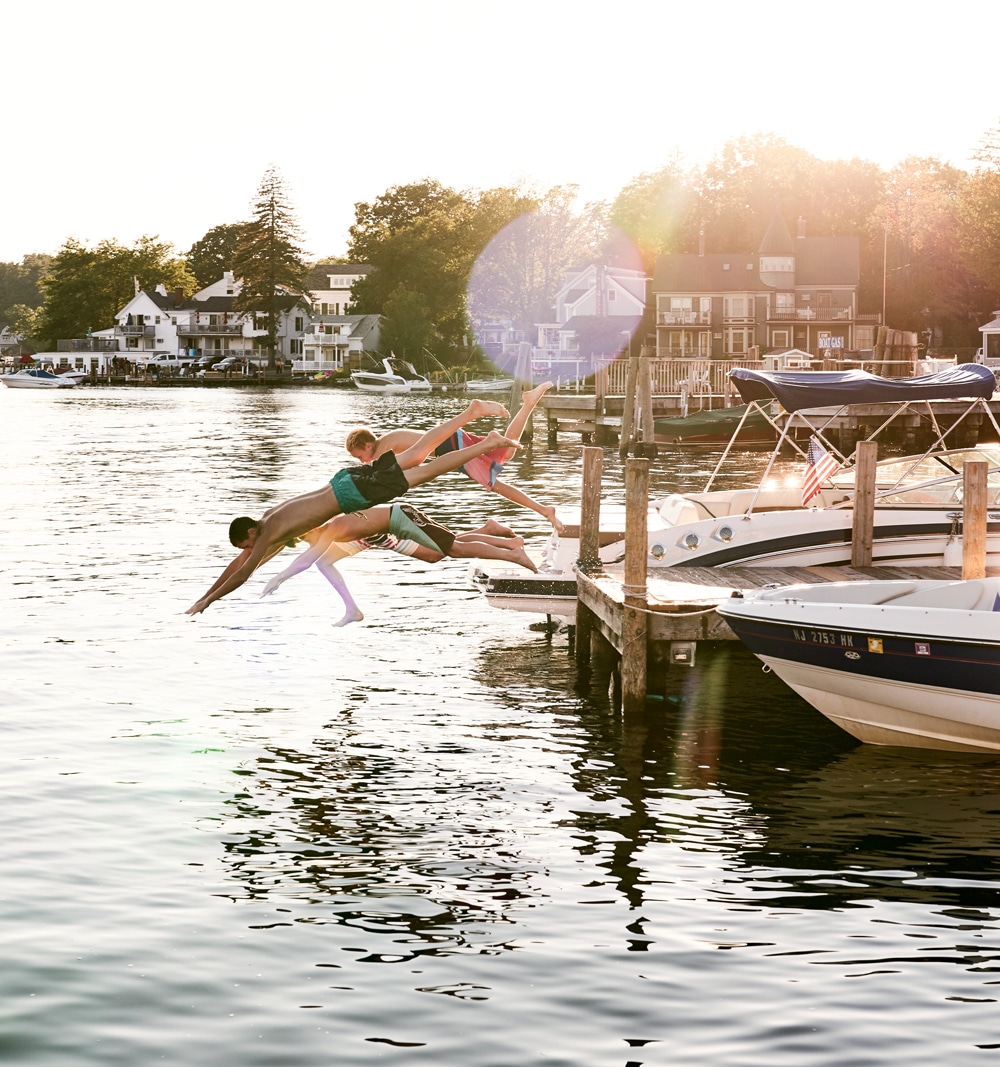
Photo Credit : Mark Fleming
When I moved to New Hampshire’s Lakes Region full-time in 2015, I was intent on learning about the local lake—about its people and its wildlife and its legends. My initial scheme was to kayak the length of Winnipesaukee early last summer, camping on islands, hiding my boat in the weeds as I engaged Winnipesaukee savants in long philosophical conversations. But then I learned about Winnipesaukee’s rough waters: namely, that out on the long throat of the lake the waves are at times six feet high, big enough to sustain a small but hard-core surfing community. I chickened out—and decided I would first survey the lake from the seat of a seaplane.
I fly on a clear June morning with Dave French, a 59-year-old pilot who grew up summering on Winnipesaukee’s shores, staying in a breezy camp his dad bought in 1961 for $5,000. As a boy he knew every hidden cove on Winnipesaukee, every rope swing. More recently, in his vintage 1967 Cessna he has spent roughly 1,600 hours in the air over the lake. He gives seaplane tours, often customized: When I mention I have a friend on one minuscule island, he swirls down toward the only house there, cutting so low that I half expect my friend to emerge onto his porch to chase us away with a rolled-up newspaper.
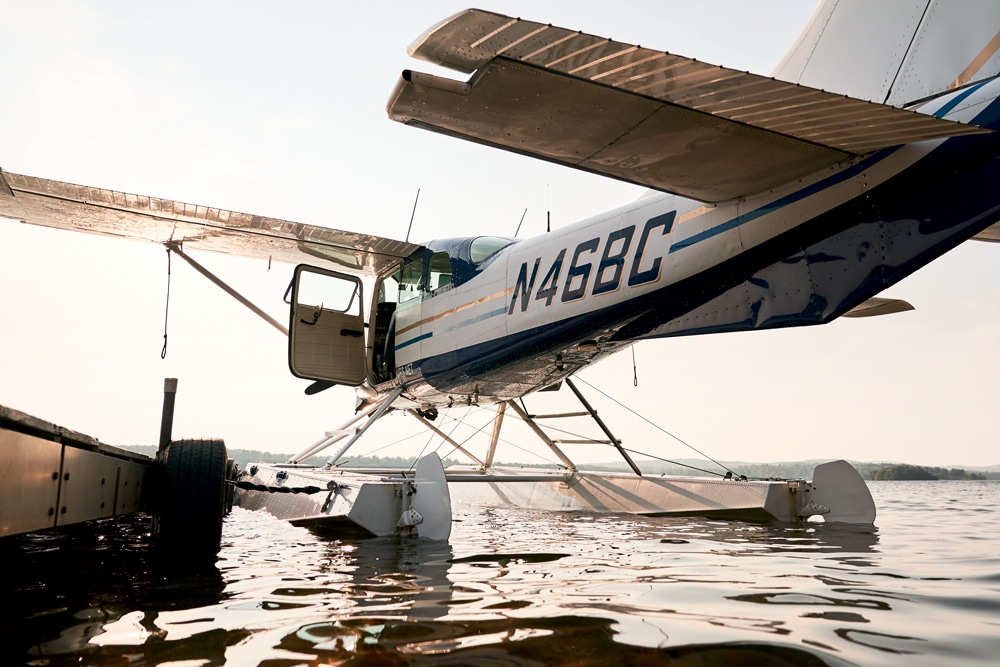
Photo Credit : Mark Fleming
We fly over Wolfeboro and two other lakeside villages, Meredith and Center Harbor, before we buzz a hilltop church on Bear Island. French tells me enough to fill a notebook, but when I ask him about the Lady of the Lake, the 125-foot steamboat that plunged to the bottom of Winnipesaukee while being towed in 1895, he can share with me only a tantalizing glimpse. “I saw it once, when the light was just right,” he says. “There was a cloud shadow, darkening the water above it, and the sun was shining from just the right angle to illuminate the ship on the bottom.”
Winnipesaukee, I realize, listening, is a different lake every day, shape-shifting with the light and the wind and the weather. No one will ever fully know it. But still people try.
—
One sunny morning in July, I drive out to Wolfeboro to talk to Ron Guilmette, a retired Massachusetts state trooper who in 2011 decided he would circumnavigate every island in Lake Winnipesaukee in a kayak. Guilmette is tall, a bit intimidating, and still strapping at 70. He accomplished his goal, paddling about 150 miles in eight day-trips with his nephew, a police dispatcher named Jay Leccese. But when he sat down to write a photo-illustrated book about their adventures, he discovered that “half of the photos we had were of me standing on a rock, and the other half were of Jay standing on a rock.”
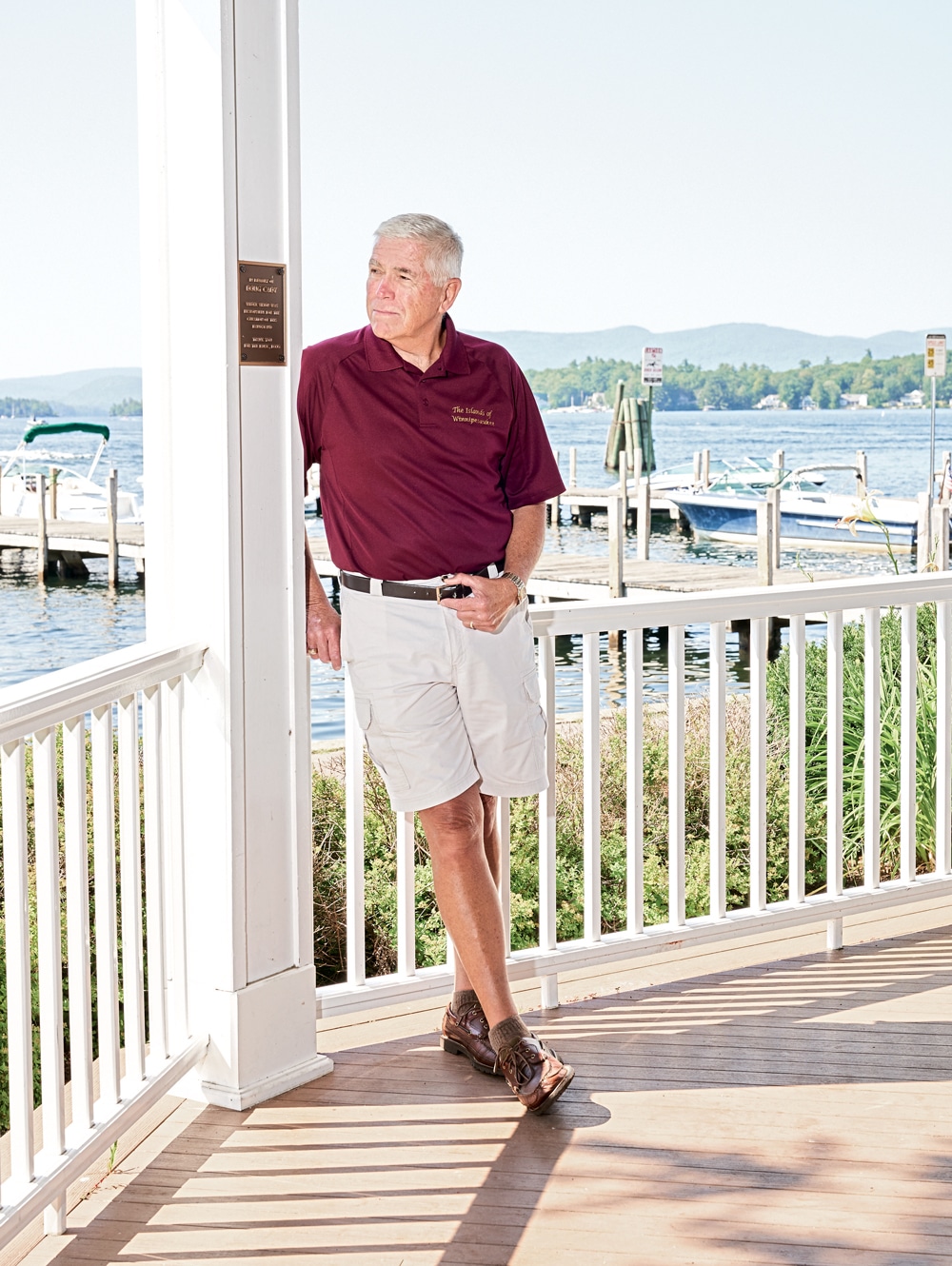
Photo Credit : Mark Fleming
Soon, the two kayakers re-circumnavigated—and re-photographed—nearly every island. They are now the coauthors of The Islands of Winnipesaukee, a handsome self-published coffee table tome that has sold some 4,000 copies. When I meet them at the boat launch where they’re unloading three kayaks for us to take out, I see they’re wearing matching dark blue quick-dry T-shirts emblazoned with “The Islands of Winnipesaukee.” A large magnet stuck to Guilmette’s SUV bears the same slogan. But what I want to know is how many islands are in Lake Winnipesaukee.

Guilmette is solemn, even cryptic, in his response. “That’s an interesting question,” he says.
We put in and paddle through the calm waters of Wolfeboro Bay, left around a lone pine tree standing on Clark Point, until we reach the lakeside home of former presidential candidate Mitt Romney and spy a square-jawed 40ish fellow—a Romney son, presumably—in the boathouse. “Spitting image of his old man,” Guilmette remarks.
We continue southeast, into the unsung Varney Islands, to behold Melody and Harmony islands, Littlest Mud Island, and Cove Island. Eventually, Guilmette tells me that when he started his quest, the most common map of the lake, made by the Boston-area Bizer Corporation, listed 253 islands on Winnipesaukee (an island being any land mass that sustains vegetation). Guilmette would soon dispute that number. He documented several omitted islands, including a minuscule speck of land—two trees and a rock—that he personally christened Trooper Island.
Bizer now lists 264, but to Guilmette the count is still incorrect, as it includes Loon Island no. 4, which is connected to Alton’s Sandy Point by a causeway. “That’s not an island,” he tells me sternly. “If I can’t kayak around it, it’s not an island.”
The truth is that no one really knows how many islands there are, for they can emerge onto and vanish from the radar absent geologic forces. In the 1950s, I learn, a man living on Cow Island decided he wanted his own island, and chucked a bunch of dynamite at the island’s tip, blasting the rocks there to bits. So Rocky Ridge Island no. 1 was born. When a new owner bought the place in 1997, the dynamite man put a clause in the sales contract saying he could come back for picnics. And he has come back, once.
Now imagine that old man on the rock, please. See the picnic basket. See the checked blanket flapping about in the wind—and know that Lake Winnipesaukee has always been loved. Even its name, given by the Abenaki Indians, who began catching shad here around 8,000 B.C., carries a certain fondness. “Winnipesaukee” likely means either “smile of the Great Spirit” or “beautiful water in a high place.”
When white people first identified Lake Winnipesaukee as a vacation spot in the mid-19th century, they regarded the place with reverence. “The waters,” author John Hayward wrote in 1839, in The New England Gazetteer, “are remarkably pure, and [the lake’s] depth in some places is said to be unfathomable. Its sources are principally from springs within its bosom.”
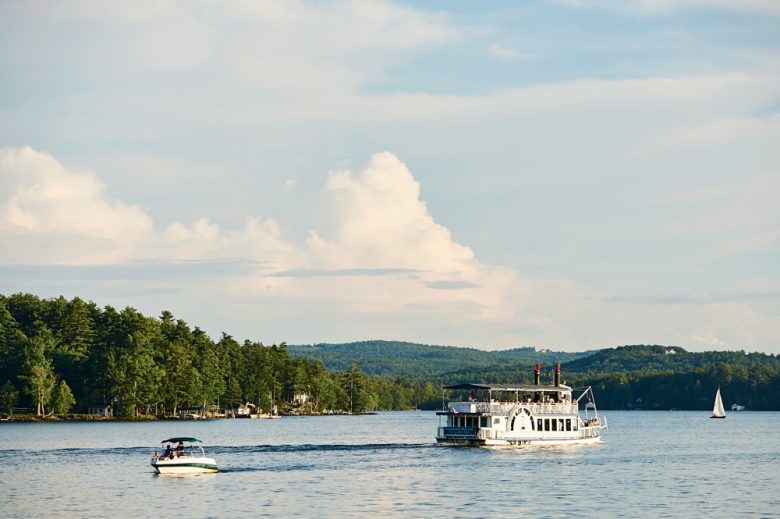
Photo Credit : Mark Fleming
What is the best way to commune with the wonders of Winnipesaukee? For some, the answer is simple: Be wealthy, and build a humongous house on the shore. In the early 2000s, Bob Bahre, the founder of New Hampshire Motor Speedway, built a 63,000-square-foot Winnipesaukee estate replete with a helipad, an infinity pool, and a man-made grotto. Bahre has since vacated, favoring his seaside getaway in St. Barts, but his home, now on the market for $20 million, is just one of myriad mansions jutting turrets and three-car garages and heavily fertilized, near-fluorescent green lawns out toward the lake.
Let’s get the bad news out of the way: The fertilizer is one of many environmental challenges facing Winnipesaukee. Water quality in the lake, while still considered “good” by the Lakes Region Planning Commission, has in the past decade suffered a “downward or negative trend,” and today areas of the lake often don a sickly green skin—an “algae bloom”—that is deadly for fish and fairly icky for Homo sapiens swimmers.
Still, there is a beautiful bird that lives on Winnipesaukee. The loon—long-necked, ruby-eyed, and best known for its shrill, haunting cry—is actually rebounding. Its population here was under siege throughout the 20th century, largely because fishermen used sinkers made of lead. Fish ate the lead; the loons in turn ate the toxic fish and died off. In 1975, there was just a handful of loon pairs left on Winnipesaukee. But ever since then, a group called the Loon Preservation Committee (LPC) has been fiercely defending the bird: building artificial loon nests in thatches of grass, nursing injured loons, and, critically, fighting against the use of lead fishing tackle, which is now illegal.
These days there are 27 loon pairs on Winnipesaukee, and one morning I join Harry Vogel, the LPC’s director, for a meandering motorboat tour through the lake’s quietest, northernmost waters. It is mid-July, and this spring’s fuzzy-headed baby loons are by now proficient paddlers. We check out a few nests ensconced in high reeds and watch a loon plunge his head deep into the water for fish.
In time, Vogel tells me that of all birds, loons are especially appealing to humans. “They hatch only one or two chicks a year,” he says, “and from day one they have to feed their young. They have to care for them. They’re like your human family with 2.4 children. People can appreciate that they are good parents. And they’re rare. When you see a loon, you’re going to stop to marvel.”
Vogel doesn’t mention it, but there is another, deeper allure to loons: Their cry—melancholic and lingering, particularly over still waters at dusk—seems freighted with all the sadness implicit in summer, a season that is at once lovely and fleeting.
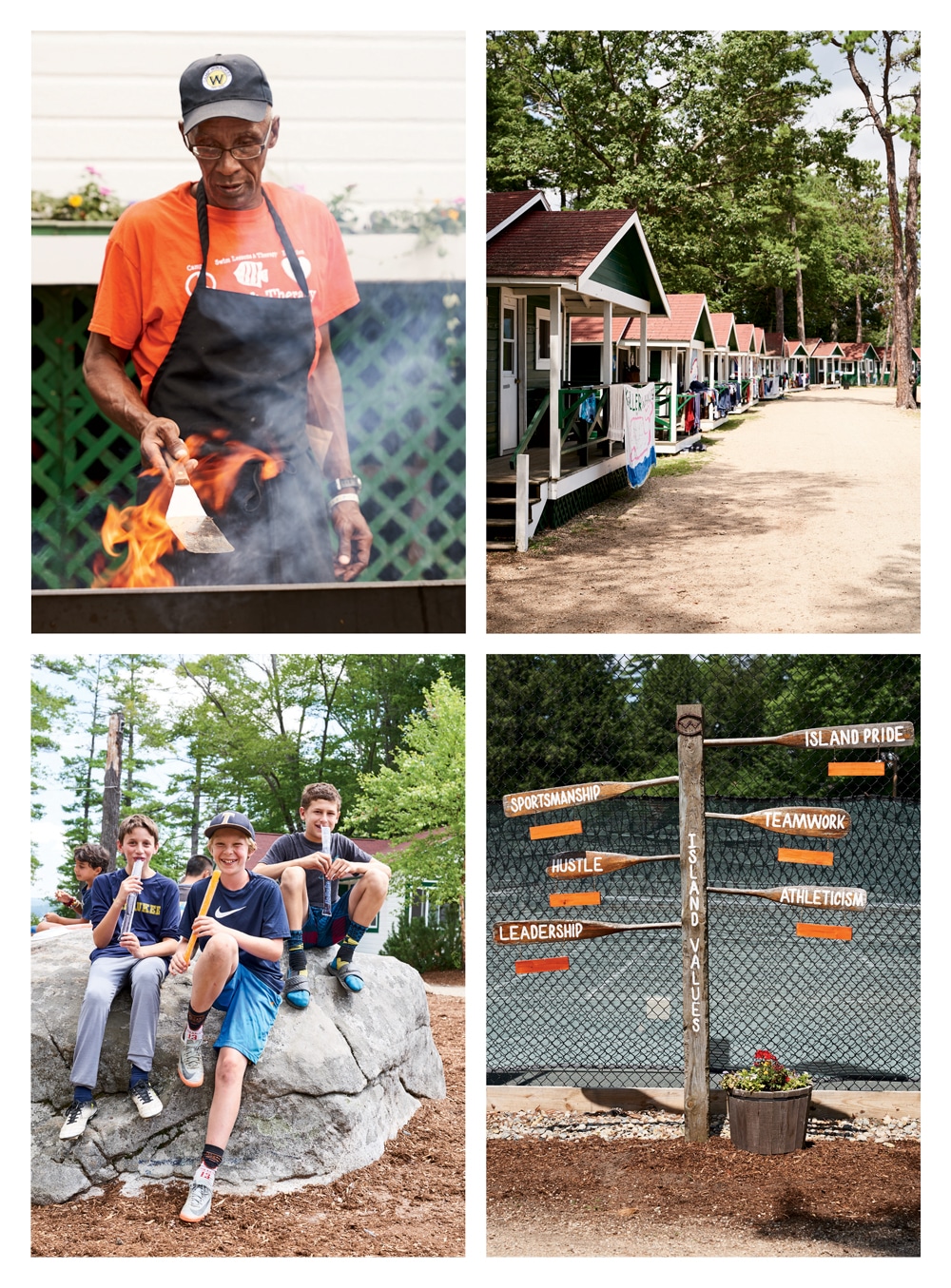
Photo Credit : Mark Fleming
As July gives way to August, I keep returning to Lake Winnipesaukee. Before this adventure I had experienced only the peripheral joys of Winnipesaukee: the rickety Skee-Ball machines at Weirs Beach, for instance, and the tricky and technical miniature golf courses out on Route 3. Now, I find myself savoring small pleasures that will be gone when the leaves turn. One afternoon, I pedal my bike down a forested hill and feel the humid air cool and soften as I ride by the water. Later, I visit one of the summer camps on the lake—Camp Winaukee, this one is called—and listen to the chittering sound of boys’ laughter rising and falling over the water.
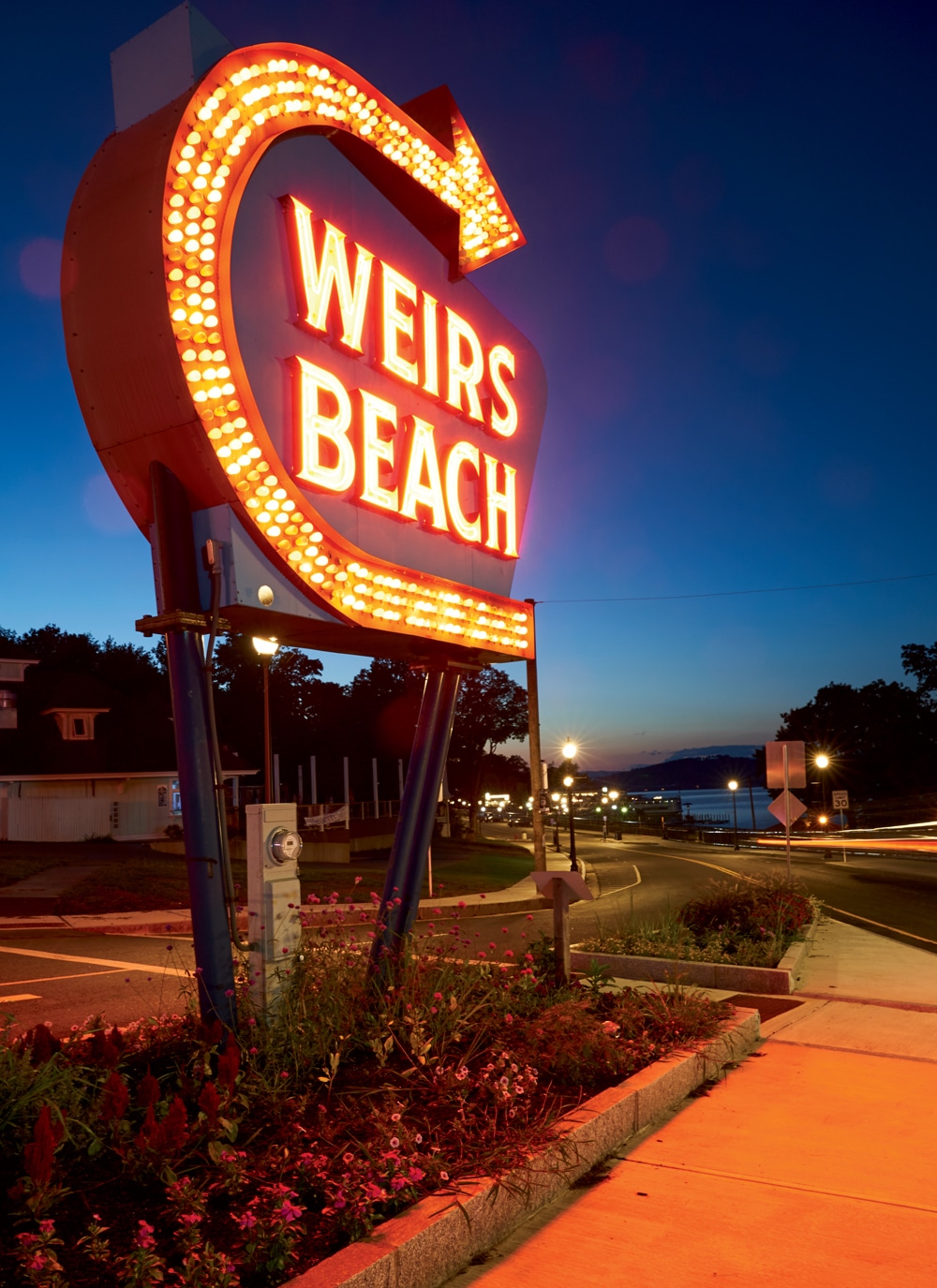
Photo Credit : Mark Fleming

Photo Credit : Mark Fleming
There is a music to Lake Winnipesaukee, and I’m not surprised to learn that in the 1970s a composer, Wheeler Beckett, wrote a symphony titled “Nocturne, Summer Night on Lake Winnipesaukee.” Beckett pieced his opus together on Ragged Island, in a small shack appointed with a piano, before it was performed, twice, at the New Hampshire Music Festival in 1976. If there was a recording, it is now lost to time (trust me, I searched). Beckett’s legacy lingers on the lake, however. A genteel and moneyed individual, he owned Ragged Island, all 11½ acres of it, and before he died in 1986 he sold it to the Lakes Region Conservation Trust, which now maintains it for the public to enjoy.
When I at last make it out to Ragged Island, it’s late August and the weather is cool and gusty, so that whitecaps foam on the rippling water. I begin hiking the island’s three-quarter-mile shoreline loop trail, and remember what a friend told me about Matilda, the black snake who lives out here, and about the deer who swim out to Ragged just after dawn, their black noses bobbing out of the water. The pines all around me are giant; they’ve never been cut. They’re primeval, I think. I am seeing the lake that the Abenaki saw when they caught shad. I’m seeing the lake fed by springs from its bosom. And I’m on a piece of Winnipesaukee that anyone can visit, whether they’ve got a million dollars or not.
It is a delight to be out here, feeling the wind in my hair.






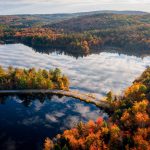
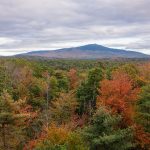
Thank you for the gift of word about a special place I remember in the 1950’s and
1960’s, there was so much I did not know about Lake Winnipesaukee that my Aunt Anne brought me and my family to for a afternoon memory of so long ago. In reading I feel as if I was just there on another visit to a place I have loved and shared with my brothers and sisters along with other family members. Thank you
for the gift of another visit. Sincerely George Singletary